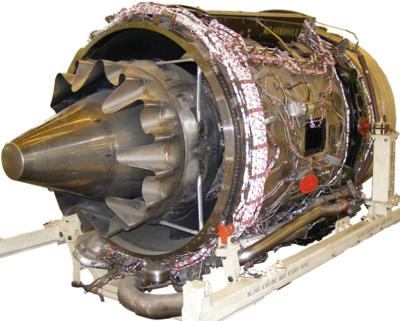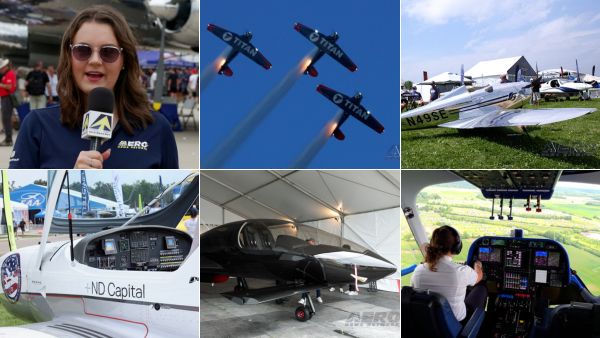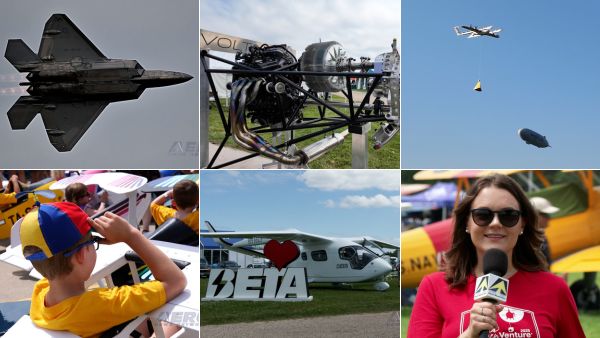Sun, Jul 11, 2021
AD 2021-12-07 Requires Removing Affected HPT Disks From Service Prior To Reaching Specified Compliance Times
The FAA is adopting a new airworthiness directive (AD) for certain Rolls-Royce Deutschland Ltd & Co KG (RRD) BR700-710A1-10, BR700-710A2-20 and BR700-710C4-11 model turbofan engines.

This AD was prompted by an investigation by RRD, which revealed a quality escape during the high-pressure turbine (HPT) stage 1 disk rim cooling air hole manufacturing process. This AD requires removing affected HPT disks from service prior to reaching specified compliance times or at the next engine shop visit, whichever occurs first. The FAA is issuing this AD to address the unsafe condition on these products. This AD is effective August 12, 2021.
Supplementary Information: The FAA issued a notice of proposed rulemaking (NPRM) to amend 14 CFR part 39 by adding an AD that would apply to certain RRD BR700-710A1-10, BR700-710A2-20 and BR700-710C4-11 model turbofan engines. The NPRM published in the Federal Register on January 21, 2021 (86 FR 6271). The NPRM was prompted by an investigation by RRD, which revealed a quality escape during the HPT stage 1 disk rim cooling air hole manufacturing process. In the NPRM, the FAA proposed to require removing affected HPT disks from service prior to reaching specified compliance times or at the next engine shop visit, whichever occurs first. The FAA is issuing this AD to address the unsafe condition on these products.
The European Union Aviation Safety Agency (EASA), which is the Technical Agent for the Member States of the European Community, has issued EASA AD 2019-0299, dated December 10, 2019 (referred to after this as “the MCAI”), to address the unsafe condition on these products.
The MCAI states:
- An occurrence was reported of an HPT stage 1 disc burst on an industrial gas turbine engine. Subsequent investigation revealed a quality escape during HPT stage 1 disc rim cooling air hole manufacturing process. A review revealed that 28 HPT stage 1 discs were subject to a similar quality escape, two of which have been recovered and removed from service. The consequence of this manufacturing error is that the affected parts can no longer safely reach their Declared Safe Cyclic Life (DSCL).
- This condition, if not corrected, may lead to failure of an affected part, possibly resulting in release of high-energy debris, with consequent damage to, and/or reduced control of, the aeroplane. To address this potentially unsafe condition, RRD issued the NMSB, providing instructions to remove the engine from service for in-shop replacement of the affected part.
- For the reasons described above, this [EASA] AD reduces the DSCL for the affected parts, requires identification of the affected parts and removal from service of each affected engine for replacement of the affected part. This [EASA] AD also prohibits (re)installation of affected parts.
You may obtain further information by examining the MCAI in the AD docket at https://www.regulations.gov by searching for and locating Docket No. FAA-2020-1174.
More News
Check out Blackshape in Oshkosh Display #190 Situated in the Apulian Aerospace district in Monopoli, Italy, Blackshape embodies the epitome of Italian craftsmanship, style, and qua>[...]
A Powerhouse In Aviation Safety Technology, Visit Alpha Systems AOA at Osh Display#3124-3125 Alpha systems AOA has been developing and integrating Angle of Attack systems for the l>[...]
Pilot Noticed That The No. 2 Engine Torque Indicator Was “Maxed Out” And The No. 1 Torque Indicator Was About 60% Analysis: The pilot in command (PIC) reported that the>[...]
Decision Altitude (DA) A specified altitude (mean sea level (MSL)) on an instrument approach procedure (ILS, GLS, vertically guided RNAV) at which the pilot must decide whether to >[...]
Aero Linx: HeliOffshore HeliOffshore is the global, safety-focused association for the offshore helicopter industry. Our mission is to lead a collective safety conversation, identi>[...]
 ANN Thanks Our Speedy Sponsor... Blackshape!!!
ANN Thanks Our Speedy Sponsor... Blackshape!!! Alpha Systems AOA Guides ANN Oshkosh Coverage
Alpha Systems AOA Guides ANN Oshkosh Coverage NTSB Final Report: Boeing CH-46E
NTSB Final Report: Boeing CH-46E ANN's Daily Aero-Term (07.24.25): Decision Altitude (DA)
ANN's Daily Aero-Term (07.24.25): Decision Altitude (DA) ANN's Daily Aero-Linx (07.24.25)
ANN's Daily Aero-Linx (07.24.25)



